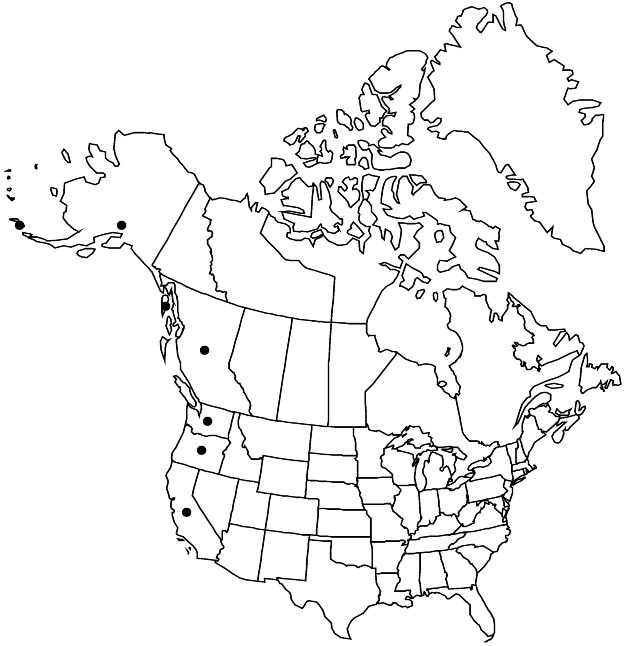Sagina maxima
Mem. Amer. Acad. Arts, n. s. 6: 382. 1858.
Plants annual or perennial, tufted, glabrous or glandular-pubescent. Stems spreading to decumbent or procumbent, much-branched, stout, rarely filiform, distal portion glandular-pubescent. Leaves: axillary fascicles absent; basal rosette or tuft of ascending leaves usually present; basal blades linear, 10–30 mm, succulent, apex apiculate, glabrous; cauline leaves conspicuously connate basally, forming shallow, scarious cup, blade linear, fleshy, apex apiculate, glabrous; proximal blades 6–15(–20) mm, distal blades rarely subulate, (2.5–)3.5–7(–9) mm. Pedicels slender to stout, glabrous or glandular-pubescent distally. Flowers axillary, 5-merous; calyx bases glabrous or glandular-pubescent; sepals ovate to orbiculate, (2–)2.5–3.5 mm, hyaline margins whitish, occasionally purple tinged on margins or apex, apex obtuse to rounded, glabrous or glandular-pubescent, remaining appressed following capsule dehiscence; petals elliptic to nearly orbiculate, (1.5–)2–2.5(–3) mm, shorter than sepals; stamens 10. Capsules (3–)3.5–4.5 mm, exceeding sepals, dehiscing ca. 1/4 length. Seeds reddish brown, reniform with abaxial groove absent, plump, 0.5 mm, smooth or slightly pebbled.
Distribution

B.C., Alaska, Calif., Oreg., Wash., e Asia.
Discussion
Subspecies 2 (2 in the flora).
Selected References
None.
Key
| 1 | Calyx bases and distal portion of stems and pedicels glandular-pubescent | Sagina maxima subsp. maxima |
| 1 | Calyx bases, stems, and distal portion of pedicels entirely glabrous | Sagina maxima subsp. crassicaulis |